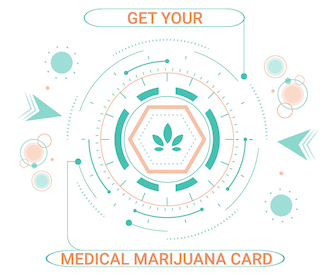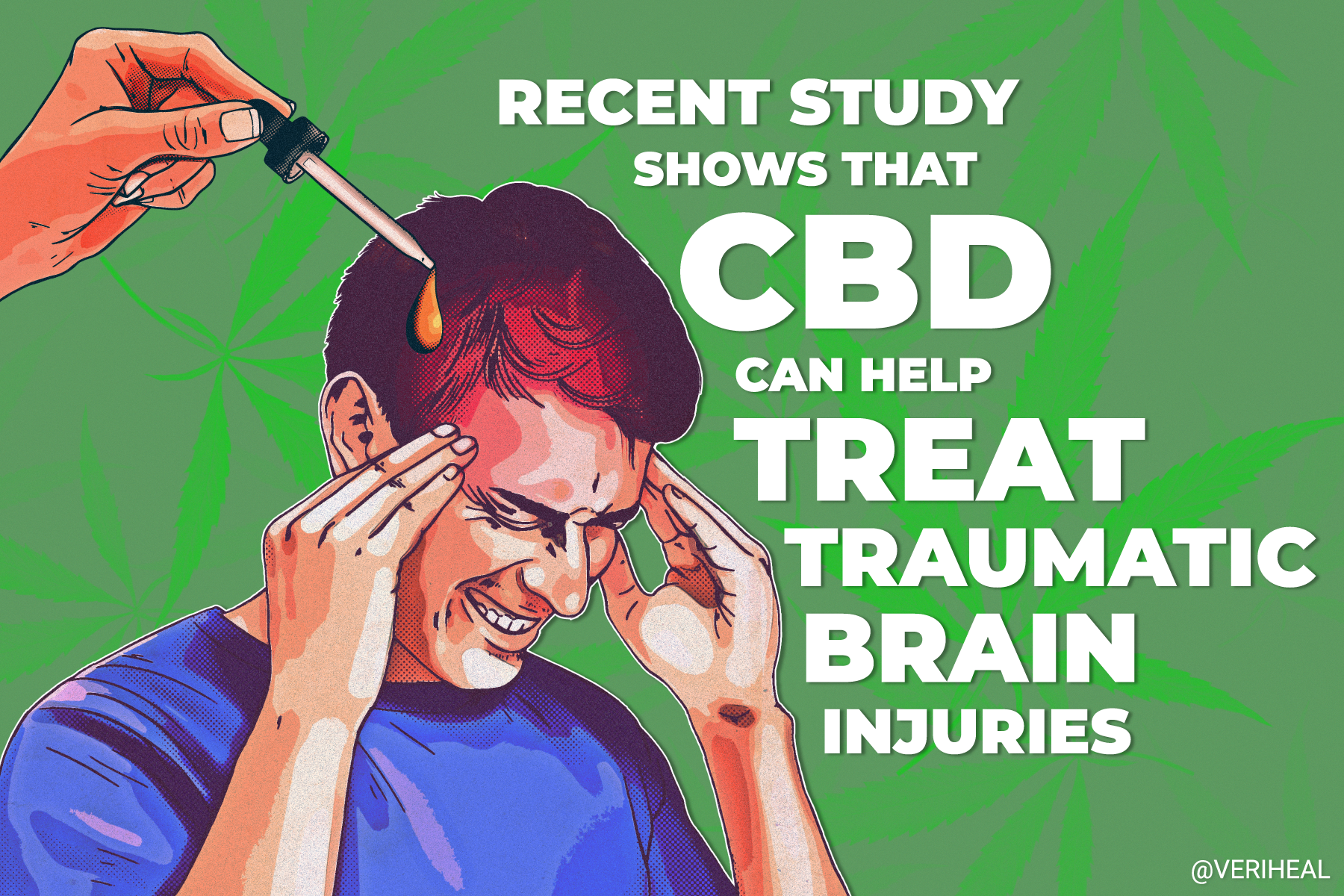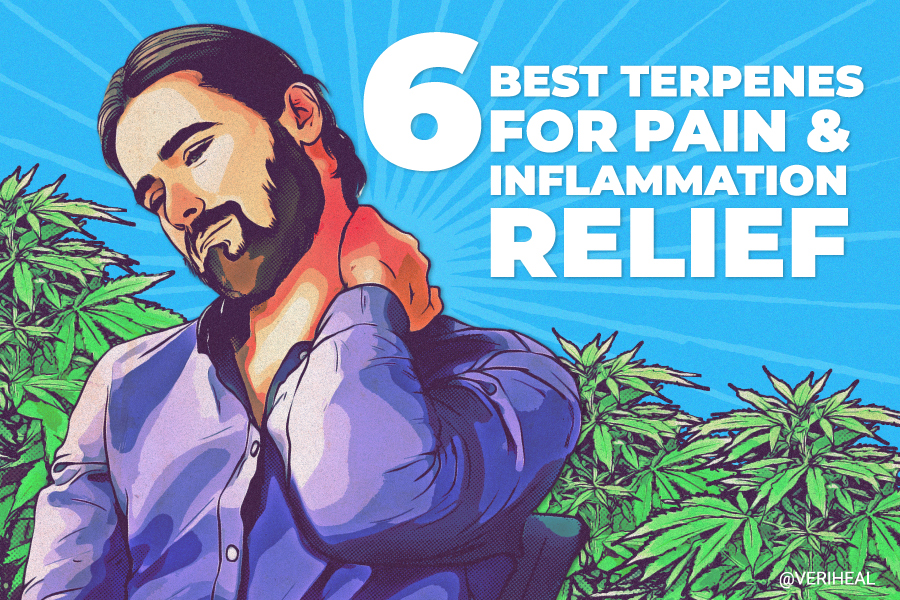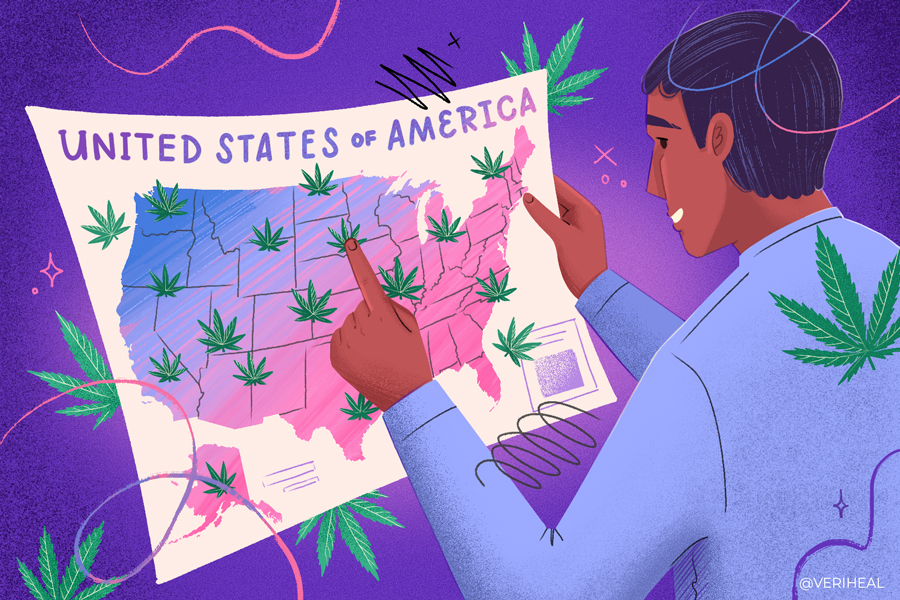Medical Cannabis and Motor Neuron Disease (MND)
- Signs, Symptoms, and Types of Motor Neuron Disease
- Are Cannabinoids a Good Treatment Option for This Condition?
- What Cannabis Preparations are Suitable for Motor Neuron Disease?
- Talk to Your Doctor About Motor Neuron Disease Treatments
Motor neuron disease (MND) is an umbrella term for a relatively rare group of progressive neurological disorders affecting the brain and nerves. People diagnosed with MND will experience a loss of functioning in the motor nerves in the brain, spine, and peripheral muscles.
Both the upper and lower motor neurons are affected in cases of MND, resulting in rapid loss of muscle control, involuntary muscle spasms, muscle wasting, respiratory weakness, and progressive paralysis.
Often fatal, the most common form of MND is a neurodegenerative condition known as amyotrophic lateral sclerosis (ALS). Many medical practitioners use the labels MND and ALS interchangeably.
Interestingly, although MND includes several other diagnoses like progressive bulbar palsy, primary lateral sclerosis, progressive muscular atrophy, and spinal muscular atrophy, some researchers believe those are also forms of ALS (16). While anyone can experience these diseases, people aged 40 to 70 years are more at risk of ALS/MND. The average age of onset is 55 years old. (18)
Each year, approximately 140,000 new cases are diagnosed around the world. In 2016, 330,918 people suffered from motor neuron diseases (9). During the same year, 926,090 people experienced disability-adjusted life-years (DALYs), and 34,325 died from MND (10).
There is no definitive cure for MND, but numerous treatment and alternative medicine options can help alleviate its negative impacts on a person’s everyday life.
With your provider’s blessing, medical marijuana could be a part of your individualized approach to help manage physical and emotional complications of ALS like spasticity, anxiety, and depression. Before you try it for yourself, know the facts about the plant’s potentially remedial qualities and how it could benefit you.
Signs, Symptoms, and Types of Motor Neuron Disease
Identifying the key signs and symptoms of MND is essential for ensuring that you or a loved one receives the correct medical care. The signs and symptoms of MND may be gradual, so some people may not realize they have the condition for three years or more.
Motor neurons are the cells responsible for controlling skeletal muscle activity, including breathing, swallowing, speaking, and walking. These cells can be found starting in the brain and spinal cord (central nervous system), where they are called “upper” motor neurons.
Motor neurons also connect the CNS to peripheral muscles (comprising the peripheral nervous system), and those are called “lower” motor neurons. When motor neurons in either tract become damaged, a patient may experience distinct neuromuscular symptoms accordingly (2).
Upper motor neurons carry the messages from nerve cells in the brain to lower motor neurons before being transmitted to muscles in the body. In cases of MND, both sets of upper and lower motor signals are obstructed, each tract causing different issues.
Upper motor neurons instruct lower motor neurons to carry out muscle movements. When UMNs are damaged, symptoms like spasticity (involuntary muscle tightness), movement slowness, and discoordination occur. Consequently, muscle weakness, atrophy or wasting, and twitching (fasciculations) occur due to lower motor neurons being degraded.
MND develops quickly once the first symptoms begin, and the median life expectancy post-diagnosis is 3-5 years (2). A study published by the Ulster Medical Society found that the median time to diagnosis from symptom onset in a group of 73 patients was 15.6 months (5). About 30% of patients live more than five years, and 10-20% live beyond ten years.
About 70% of ALS patients present with progressive limb weakness, starting close to the body and then out to the extremities (2). Other early symptoms may be mild and include:
- Muscle twitching and cramps
- Speech impairment
- Swallowing difficulties caused by weakness in the throat and tongue muscles
- Difficulty grasping objects caused by hand muscle weakness
- Falling or stumbling caused by leg muscle weakness
When MND progresses, the symptoms drastically worsen. Examples of the later-stage symptoms of MND include the following:
- Frontotemporal dementia
- Extreme fatigue
- Insomnia
- Weight loss
- Decreased lung capacity
- Impaired communication and speaking
- Respiratory weakness and problems
- Behavioral changes
- Cognitive changes
- Dry mouth
- Excessive saliva
- Personality changes and emotional distress
- Anxiety and depression
Doctors will classify MNDs based on whether the loss of function (degeneration) is passed down through family genetics (hereditary), is not related to family history (sporadic), or whether it first affects either or both upper motor neurons or lower motor neurons.
Aside from Amyotrophic Lateral Sclerosis (ALS), some other subtypes of MND include Progressive Muscular Atrophy (PMA), Progressive Bulbar Palsy (PBP), Primary Lateral Sclerosis (PLS), spinal muscular atrophy, post-polio syndrome, and Kennedy’s disease (2).
Are Cannabinoids a Good Treatment Option for This Condition?
Some clinical trials have demonstrated the beneficial effects of cannabinoids in enhancing the quality of life in MND patients. Previous research has highlighted the possible therapeutic benefits of cannabinoids in patients with neurological conditions, such as appetite stimulation, anti-inflammatory effects, pain relief, anticonvulsant properties, improving quality of life, symptomatic relief of anxiety and depression, and muscle relaxation (antispastic) (4).
A breakthrough 2018 multicenter study published in Lancet Neurology indicated, for the first time, that cannabis sativa-derived chemical compounds may help reduce the symptoms of spasticity in patients with MND (13).
The multicenter, double-blind, randomized, placebo-controlled study explored the effects of nabiximols (Sativex®), a 1:1 THC: CBD cannabinoid-based oromucosal spray. Nabiximols is a naturally-sourced cannabis extract approved in 29 countries for treating spasticity in cases of multiple sclerosis (MS) (11). Unfortunately, it is still in FDA phase III trials in the US. It is not synthetic like dronabinol or nabilone, which is already FDA-approved for other conditions.
A group of IRCCS Ospedale San Raffaele physician-scientists and Università Vita-Salute San Raffaele came to these findings after testing the effects of a 1:1 THC: CBD mouth spray on MND patients. Supported by the Italian Research Foundation for Amyotrophic Lateral Sclerosis (AriSLA), the study was led by the Institute of Experimental Neurology director Giancarlo Comi (7).
To paint a clear picture of the spasticity-reducing effects of cannabinoids in cases of MND, researchers recruited 60 adults between the ages 18-80 with ALS or PLS. Each study participant was recruited from four tertiary motor neuron disease centers in Italy. Researchers limited the study to patients who had experienced spasticity symptoms for at least three months and were taking anti-spasticity medication for 30 days before enrolment.
Participants were randomly selected to receive a 1:1 THC: CBD mouth spray (29 participants) or placebo (30 people) for a 6-week period. For the initial two weeks of treatment, the number of sprays administered to the cannabinoid-consuming patients gradually self-increased. Once the perfect, self-titrated dose was reached, it was maintained for a 4-week period. The maximum dosing allowed was 12 sprays per 24 hours.
During the trial, a trained physician monitored changes in spasticity. By utilizing the Modified Ashworth Scale (MAS)—a muscle tone assessment scale that measures resistance during passive soft-tissue stretching — the physician could rate each participant’s level of joint spasticity. Symptoms, such as sleep disruption, pain, spasm frequency, and spasticity levels, were recorded in a symptom diary. Based on these diaries, pain was the only secondary endpoint significantly reduced.
Once the 6-week treatment period was over, the researchers noticed a significant improvement in spasticity among those who use the 1:1 THC: CBD spray. When compared with the placebo group, the cannabinoid-consuming patients reported much better symptomatic relief. Notably, the intensity of the muscle spasms did not change. However, the researchers noticed a major improvement in pain scores for the 1:1 THC: CBD spray group compared with the placebo.
In summary, the nabiximols spray was well tolerated and effective for their pain and muscle spasms. Mild to moderate adverse effects, such as nausea, vertigo, asthenia, and somnolence, were experienced by the study subjects who received the 1:1 THC: CBD spray. There was no incidence of serious adverse reactions, and no participants decided to withdraw from the study.
This was the first randomized control trial of the safety and efficacy of nabiximols in people with motor neuron disease. The positive findings in people with MS led to this ground-breaking MND study with nabiximols. It just goes to show how follow-up studies may expand the use of this natural cannabis extract already prescribed in 29 other countries.
Medical Cannabis, Neurological Disorders, and the Endocannabinoid System (ECS)
Utilizing extracts from the cannabis sativa plant to reduce the symptoms of motor neuron disease makes sense since the brain’s endocannabinoid system (ECS) primarily influences neuronal synaptic communication. The ECS also affects various biological functions, such as anxiety, eating, growth, development, metabolism, learning, memory, and reproduction, via a wide range of nervous system maintenance and actions.
CB2 receptors are naturally found in low levels in healthy cortical and spinal motor neurons to auto-regulate nerve and immune cell functions. Researchers have learned that CB2 receptors are heightened in the motor cortex of MND patients and are associated with reactive gliosis.
Reactive gliosis happens in all cases of brain and spinal cord trauma. It is basically the body’s repair attempts (via reactive glial cells) in response to central nervous system damage. CB2 receptors become strongly and selectively elevated in Alzheimer’s disease, MS, and ALS (14). This evidence shows additional attempts by the body to heal itself by utilizing the endocannabinoid system.
Other studies have shown that CB2 receptors can decrease the pro-inflammatory substances released by microglia. CB2 receptors may also stimulate adult neurogenesis and possibly play a role in regulating the blood-brain barrier. These observations indicate that targeting this receptor may serve for developing neuroprotective therapies in MNDs (6).
What Cannabis Preparations Are Suitable for Motor Neuron Disease?
Cannabis is an incredibly diverse plant that can be administered in myriad ways, from dropping a tincture beneath the tongue to smoking or vaping the raw flower. Bioavailability—the extent a substance or drug is absorbed and used by the body — differs depending on the type of cannabis preparation being used. That said, you must choose your preparation wisely (12).
Inhalational methods are the most bioavailable and work the fastest, within 10 minutes (8). However, respiratory failure and chronic weakness make this form impractical for people with MND. However, sublingual tinctures and sprays like nabiximols (1:1 THC: CBD) used in the study above can begin to work within 15 minutes and last for several hours.
Tinctures can partially bypass digestive first-pass effects and completely bypass the airways for people who want to avoid respiratory compromise. They are the second best absorbed and second quickest form of taking cannabis into the body. Tinctures may be most suitable for people with respiratory difficulties, such as in MND if used with proper swallowing precautions recommended by their speech therapist.
If you choose cannabis edibles, the onset time will vary from 30-60 minutes (17). Activated, water-soluble cannabinoid powder has an onset window of around 20 minutes, whereas pills, capsules, and tablets get to work in 4-6 hours.
Talk to Your Doctor About Motor Neuron Disease Treatments
A neurologist usually diagnoses MND after conducting a physical examination, imaging to rule out other causes, and assessing the patient’s symptoms. Although there are no specific diagnostic tests to detect MND, doctors can review clinical history for progressive symptoms and perform a series of electrophysiological tests, such as EMG and nerve conduction studies.
Some other tests for MND may include:
- Blood tests
- Lumbar puncture
- Muscle biopsy
- MRI scanning of the brain and spinal cord
Once a neurologist confirms that you have MND, you can discuss the medical uses of cannabis-based treatment options with a doctor. However, it’s important to note that cannabis should not be used as a substitute for other doctor-prescribed medications.
Complementary Treatments Worth Discussing with Your Doctor
Coping with the symptoms of MND can be challenging, but several complementary treatments may help you. The term ‘complementary’ means that you can use these therapies alongside your doctor-advised treatments to amplify your body’s natural healing capabilities.
Examples of complementary medicine generally welcomed in cases of MND include herbal medicine. When tested in animal models, herbal medicine has been shown to protect motor neurons and motor activity through immune system modulation (3).
When treated with herbal medicine, ALS patients experienced symptomatic relief. However, more extensive clinical trials with bigger sample sizes are necessary to develop proper treatments in this avenue (15).
Numerous supplements that contain antioxidant properties could prove beneficial when used by ALS patients as a complementary therapy (1). Some options include:
- Catechins
- Co-Q10
- Creatine
- Idebenone
- L-Carnitine
- Omega-3
- Resveratrol
- Vitamin A
Keep in mind that while medical marijuana and other complementary medicines can prove beneficial for you or a loved one with MND, you must continue using any medication(s) that are prescribed by your doctor.
Note: The content on this page is for informational purposes only and is not intended to be professional medical advice. Do not attempt to self-diagnose or prescribe treatment based on the information provided. Always consult a physician before making any decision on the treatment of a medical condition.
1. Bedlack, R. S., Joyce, N., Carter, G. T., Paganoni, S., & Karam, C. (2015). Complementary and alternative therapies in amyotrophic lateral sclerosis. Neurologic Clinics, 33(4), 909–936. https://www.ncbi.nlm.nih.gov/pmc/articles/PMC4712627/
2. Brotman RG, Moreno-Escobar MC, Joseph J, et al. Amyotrophic Lateral Sclerosis. [Updated 2022 Aug 22]. In: StatPearls [Internet]. Treasure Island (FL): StatPearls Publishing; 2022 Jan-. Available from: https://www.ncbi.nlm.nih.gov/books/NBK556151/?report=classic
3. Cai, M., & Yang, E. J. (2019). Complementary and alternative medicine for treating amyotrophic lateral sclerosis: A narrative review. Integrative Medicine Research, 8(4), 234–239.https://www.sciencedirect.com/science/article/pii/S2213422019301301
4. Cristino, L., Bisogno, T., & Di Marzo, V. (2019). Cannabinoids and the expanded endocannabinoid system in neurological disorders. Nature Reviews Neurology, 16(1), 9–29. https://pubmed.ncbi.nlm.nih.gov/31831863/
5. Donaghy, C., Dick, A., Hardiman, O., & Patterson, V. (2008). Timeliness of diagnosis in motor neurone disease: a population-based study. The Ulster medical journal, 77(1), 18–21. https://www.ncbi.nlm.nih.gov/pmc/articles/PMC2397016/
6. Espejo-Porras, F., Fernández-Ruiz, J., & de Lago, E. (2018). Analysis of endocannabinoid receptors and enzymes in the post-mortem motor cortex and spinal cord of amyotrophic lateral sclerosis patients. Amyotrophic Lateral Sclerosis and Frontotemporal Degeneration, 19(5-6), 377–386. https://pubmed.ncbi.nlm.nih.gov/29334787/
7. Institute of Experimental Neurology – HSR Research. (n.d.). Retrieved February 20, 2023, from http://research.hsr.it/en/institutes/institute-of-experimental-neurology.html
8. McGilveray, I. J. (2005). Pharmacokinetics of cannabinoids. Pain Research and Management, 10(suppl a). https://pubmed.ncbi.nlm.nih.gov/16237477/
9. Members’ login. International Alliance of ALSMND Associations. (n.d.). Retrieved February 20, 2023, from https://www.als-mnd.org/what-is-alsmnd/
10. Page 16258894. medwirenews.com. (n.d.). Retrieved February 20, 2023, from https://www.medwirenews.com/neurology/global-burden-of-motor-neuron-diseases-quantified/16258894
11. plc, J. P. (2022, June 28). Jazz Pharmaceuticals announces top-line results from phase 3 trial evaluating Nabiximols Oromucosal Spray in adult participants with multiple sclerosis spasticity. PR Newswire: press release distribution, targeting, monitoring and marketing. Retrieved February 20, 2023, from https://www.prnewswire.com/news-releases/jazz-pharmaceuticals-announces-top-line-results-from-phase-3-trial-evaluating-nabiximols-oromucosal-spray-in-adult-participants-with-multiple-sclerosis-spasticity-301576738.html
12. Price G, Patel DA. Drug Bioavailability. [Updated 2022 Jun 23]. In: StatPearls [Internet]. Treasure Island (FL): StatPearls Publishing; 2022 Jan-. Available from: https://www.ncbi.nlm.nih.gov/books/NBK557852/
13. Riva, N., Mora, G., Sorarù, G., Lunetta, C., Ferraro, O. E., Falzone, Y., Leocani, L., Fazio, R., Comola, M., Comi, G., Formaglio, F., Rossi, P., Clerici, M., Falzone, Y. M., Pozzi, L., Martinelli, D., Cerri, F., Lopez, I. D., Martinelli-Boneschi, F., … Chio, A. (2018). Safety and efficacy of nabiximols on spasticity symptoms in patients with motor neuron disease (canals): A multicentre, double-blind, randomised, placebo-controlled, phase 2 trial. The Lancet Neurology, 18(2), 155–164. https://www.thelancet.com/journals/laneur/article/PIIS1474-4422(18)30406-X/fulltext
14. Skaper, S. D., & Di Marzo, V. (2012). Endocannabinoids in nervous system health and disease: The big picture in a Nutshell. Philosophical Transactions of the Royal Society B: Biological Sciences, 367(1607), 3193–3200. https://www.ncbi.nlm.nih.gov/pmc/articles/PMC3481537/
15. Song, Y., Jia, Q., Guan, X., Kazuo, S., Liu, J., Duan, W., Feng, L., Zhang, C., & Gao, Y. (2022). Herbal Medicine for Amyotrophic Lateral sclerosis: A systematic review and meta-analysis. Frontiers in Pharmacology, 13. https://www.frontiersin.org/articles/10.3389/fphar.2022.946548/full
16. Steckinsights. (2023, January 17). ALS vs other motor neuron diseases: What are the differences? Target ALS. Retrieved February 20, 2023, from https://www.targetals.org/2022/01/04/als-and-other-motor-neuron-diseases-whats-the-difference/
17. Vandergriendt, C. (2019, August 9). How long do edibles take to kick in? plus duration, side effects, more. Healthline. Retrieved February 20, 2023, from https://www.healthline.com/health/how-long-do-edibles-take-to-kick-in#:~:text=Edibles%20typically%20take%20around%2030,on%20a%20lot%20xof%20factors
18. Who gets Als? The ALS Association. (n.d.). Retrieved February 20, 2023, from https://www.als.org/understanding-als/who-gets-als
















